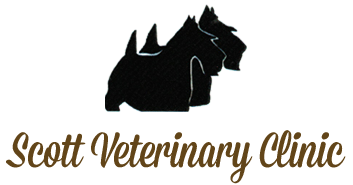Library
-
A large, well-ventilated cage with a plastic bottom and wire walls and top is suitable. Wire-bottom rabbit cages are acceptable, but to decrease foot trauma, at least half of the wire floor should be covered with plastic, Plexiglas, or untreated wood. The bottom of the cage can be lined with hay or commercially available recycled paper products. Rabbits can be trained to use a litter box. Rabbits should never be allowed to run loose in the house unless they are supervised or contained in a rabbit-proof room.
-
If your pet had an emergency crisis, how would you manage it? Ask your veterinary hospital how they handle after-hour emergencies. Use this handout to help you plan ahead and be prepared in the event of a pet health emergency.
-
Hyaluronan topical (Optixcare wipes®) are used to remove sticky mucus, eye secretions, and crusty debris from around the eyes of dogs, cats, and other small pets. They contain chamomile and hyaluron, which are gentle cleaning supplements. They are used to manage tear staining around the eyes in pets prone to this condition.
-
Hydrocortisone otic is a steroid medication used to treat topical inflammation of the ears in pets. It is often combined with antibiotics and comes as a liquid solution applied within the ear canal.
-
Hydroxyzine is given by mouth or injection and is used off label to treat allergic or itchy conditions. Give as directed. The most common side effect is sedation. Do not use in pets that are allergic to it or cetirizine, or pets that have heart failure, urinary obstruction, or stomach obstruction. If a negative reaction occurs, please call your veterinary office.
-
Hypochlorous acid (HOCl) topical is used for the management of skin conditions such as wounds, abscesses, cuts, abrasions, skin irritations, ulcers, post-surgical incision sites, and burns. It may be used to prevent or treat bacterial skin infections, including methicillin-resistant staphylococcus aureus (MRSA). Hypochlorous acid also has antifungal and antiviral properties and is reported to reduce inflammation, pain, and itching.
-
There are four major infectious diseases seen in pet rabbits: myxomatosis, rabbit hemorrhagic disease (RHD), encephalitozoonosis, and pasteurellosis. This handout discusses the causes, signs, and treatments for these diseases. Be sure to have your rabbit checked annually by a veterinarian to keep them as healthy as possible and minimize problems.
-
Insulin is injected under the skin to treat diabetes, ketoacidosis, and high potassium levels. Side effects may include low or high blood sugar levels, insulin resistance, and skin allergic reactions to the injections. Do not use in pets who are having an episode of low blood sugar and do not use pork insulins in pets with a pork allergy.
-
Insulin glargine is an injectable medication used in cats, dogs, ferrets, guinea pigs, and horses with diabetes mellitus. It is used to lower blood sugar levels and for long-term maintenance therapy of diabetes mellitus. Monitor closely for signs of low blood sugar (weakness, lack of energy, lethargy, stumbling or difficulty walking, behavior changes, muscle twitching, seizures, and/or unresponsive).
-
An insulinoma is a cancerous condition involving the beta cells of the pancreas. Beta cells are the cells that produce insulin. Clinical signs may include pawing at the mouth, weight loss, tremors, collapse, abnormal behavior, depression, lethargy, and confusion. Treatment can be medical, surgical, or both with proper dietary management.

